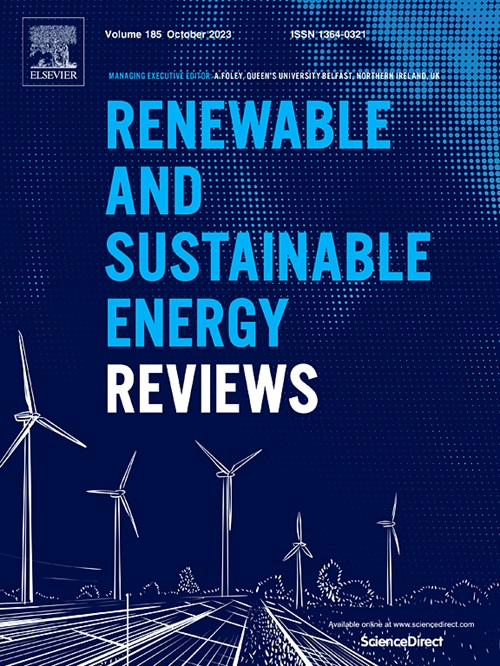Multi-objective optimization of vertical and horizontal solar shading in residential buildings to increase power output while reducing yearly electricity usage
IF 16.3
1区 工程技术
Q1 ENERGY & FUELS
引用次数: 0
Abstract
Background
One of the effective strategies to reduce residential energy use is shading devices. Shading devices can be installed adjacent to windows in vertical or horizontal orientations to regulate the amount of sunlight entering a building. This study focuses on Photovoltaic Shading Devices (PVSDs), which combine traditional shading functions with photovoltaic (PV) technology. PVSDs are designed to block excessive sunlight and convert incident solar radiation into electricity, thereby serving dual purposes of energy conservation and renewable energy production.
Methodology
This work presents a multi-objective optimization of PVSD configurations to maximize power output and reduce annual electricity consumption in residential buildings. Nine design variables were optimized using EnergyPlus software for energy simulation and JEPLUS + EA software for optimization. The study analyzed four cities representing different climate types.
Results
The results showed that the use of solar shading for the city of Bandar Abbas reduces electricity consumption by 1000 kWh per year and also produces 1920 kWh of electricity. In the south, west, north, and east directions, electricity has improved between 15 and 37 %, 10–29 %, 7–22 %, and 7–30 % annually. The findings highlight the effectiveness of PVSDs in balancing energy efficiency and renewable energy production, with significant variations depending on climate and building orientation.
求助全文
约1分钟内获得全文
求助全文
来源期刊

Renewable and Sustainable Energy Reviews
工程技术-能源与燃料
CiteScore
31.20
自引率
5.70%
发文量
1055
审稿时长
62 days
期刊介绍:
The mission of Renewable and Sustainable Energy Reviews is to disseminate the most compelling and pertinent critical insights in renewable and sustainable energy, fostering collaboration among the research community, private sector, and policy and decision makers. The journal aims to exchange challenges, solutions, innovative concepts, and technologies, contributing to sustainable development, the transition to a low-carbon future, and the attainment of emissions targets outlined by the United Nations Framework Convention on Climate Change.
Renewable and Sustainable Energy Reviews publishes a diverse range of content, including review papers, original research, case studies, and analyses of new technologies, all featuring a substantial review component such as critique, comparison, or analysis. Introducing a distinctive paper type, Expert Insights, the journal presents commissioned mini-reviews authored by field leaders, addressing topics of significant interest. Case studies undergo consideration only if they showcase the work's applicability to other regions or contribute valuable insights to the broader field of renewable and sustainable energy. Notably, a bibliographic or literature review lacking critical analysis is deemed unsuitable for publication.
 求助内容:
求助内容: 应助结果提醒方式:
应助结果提醒方式:


